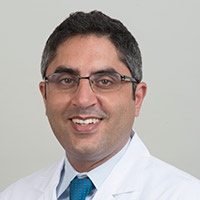01 Jul Some Breast Cancer Patients Have Excellent Results With Partial Breast Radiation
 MedicalResearch.com Interview with:
MedicalResearch.com Interview with:
Dr. Mitchell Kamrava MD
Department of Radiation Oncology
University of California Los Angeles
Los Angeles, CA
Medical Research: What is the background for this study? What are the main findings?
Dr. Kamrava: Breast conservation (lumpectomy followed by radiation) is known, based on multiple randomized trials with over 20 years of follow-up, to provided equivalent outcomes as mastectomy. The radiation component of breast conservation has standardly been delivered to the whole breast. Studies show that the majority of breast recurrences occur near the lumpectomy cavity causing some to ask whether it is necessary to treat the whole breast in order to reduce the risk of a recurrence.
Partial breast radiation delivers treatment just to the lumpectomy cavity with a small margin of 1-2 cm. It’s delivered in a shorter time of 1 week compared with about 6 weeks for standard whole breast radiation and 3-4 weeks for hypofractionated whole breast radiation.
The original method developed to deliver partial breast radiation is interstitial tube and button brachytherapy. This uses multiple small little tubes that are placed through the lumpectomy cavity to encompass the area at risk. One end of these tubes can be connected to a high dose rate brachytherapy machine that allows a motorized cable with a very small radiation source welded to the end of it to be temporarily pushed in and out of each of the tubes so that the patient can be treated from “inside out”. This helps concentrate the radiation to the area of the lumpectomy cavity while limiting exposure to normal tissues. This treatment is most commonly delivered as an out-patient two times per day for a total of 10 treatments.
The main finding from our paper is that in reviewing the outcomes on over 1,000 women treated with this technique with an average follow-up of 6.9 years that the 10 year actuarial local recurrence rate was 7.6% and in women with more than 5 years of follow-up physician reported cosmetic outcomes were excellent/good in 84% of cases.
Medical Research: What should clinicians and patients take away from your report?
Dr. Kamrava: There are groups of women who are appropriate candidates for partial breast radiation. For these women a 1 week course of radiation to just a portion of the breast around the lumpectomy cavity demonstrates similar local control outcomes and excellent/good cosmetic outcomes compared with the results we would expect using a more standard whole breast approach.
Medical Research: What recommendations do you have for future research as a result of this study?
Dr. Kamrava: We eagerly await the results of randomized clinical trials comparing whole breast versus partial breast radiation. We need level 1 evidence prior to being able to routinely offer partial breast radiation. It is anticipated that results from the European randomized trial will be presented before the end of this year. Until this data is available multiple national organizations have published guidelines identifying patients who are candidates for partial breast radiation outside of a clinical trial. We believe that our data further confirms that it is appropriate to be treating certain groups of women with partial breast radiation outside of a clinical trial.
Citation:
Ann Surg Oncol. 2015 Apr 28. [Epub ahead of print]
[wysija_form id=”3″]
Dr. Mitchell Kamrava MD Department of Radiation Oncology (2015). Some Breast Cancer Patients Have Excellent Results With Partial Breast Radiation
Last Updated on July 1, 2015 by Marie Benz MD FAAD
